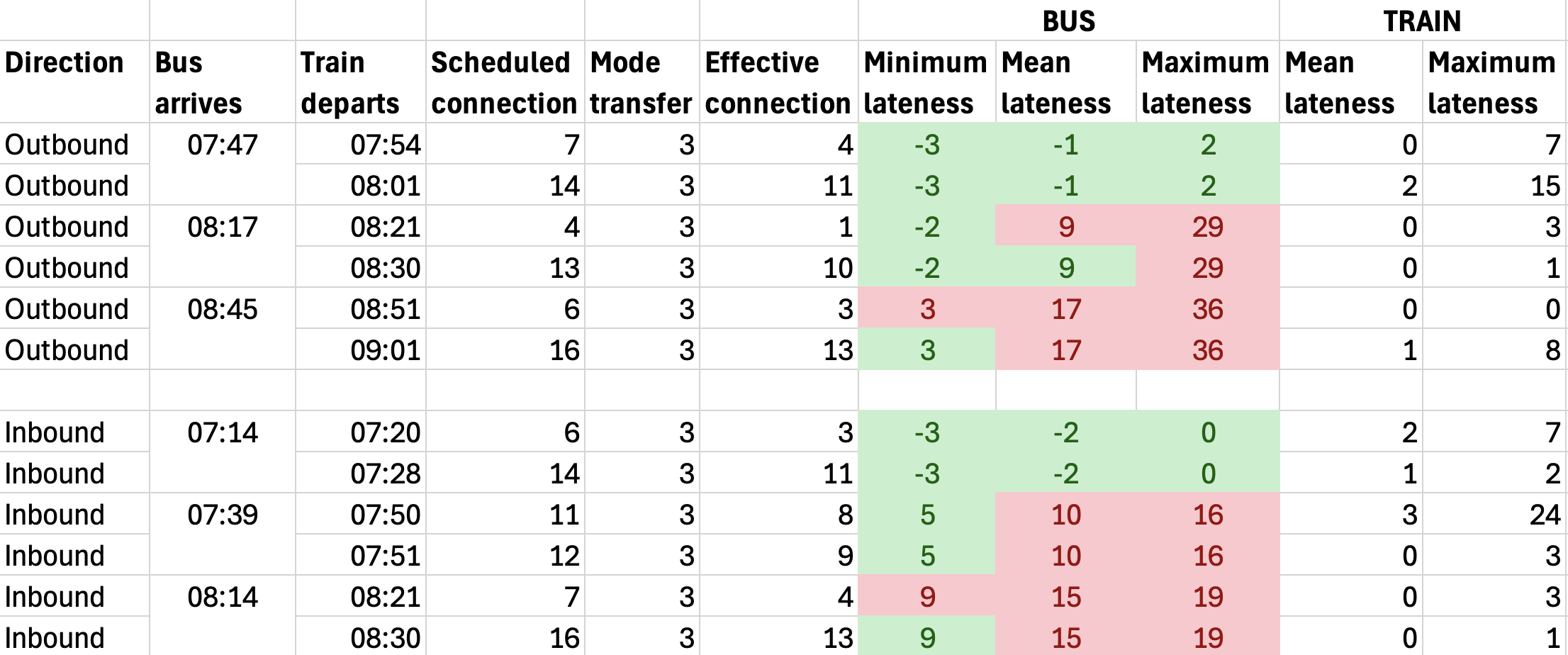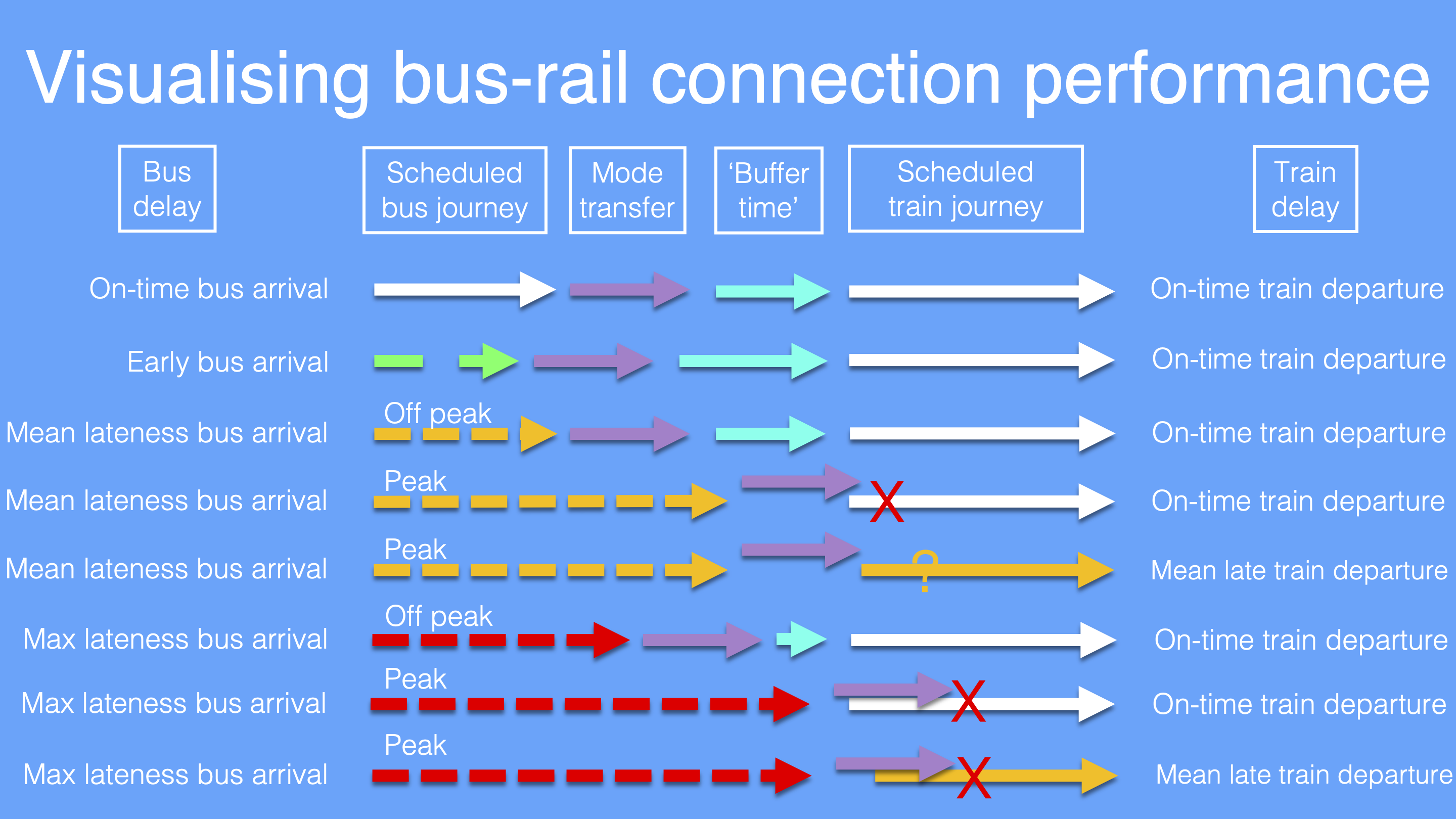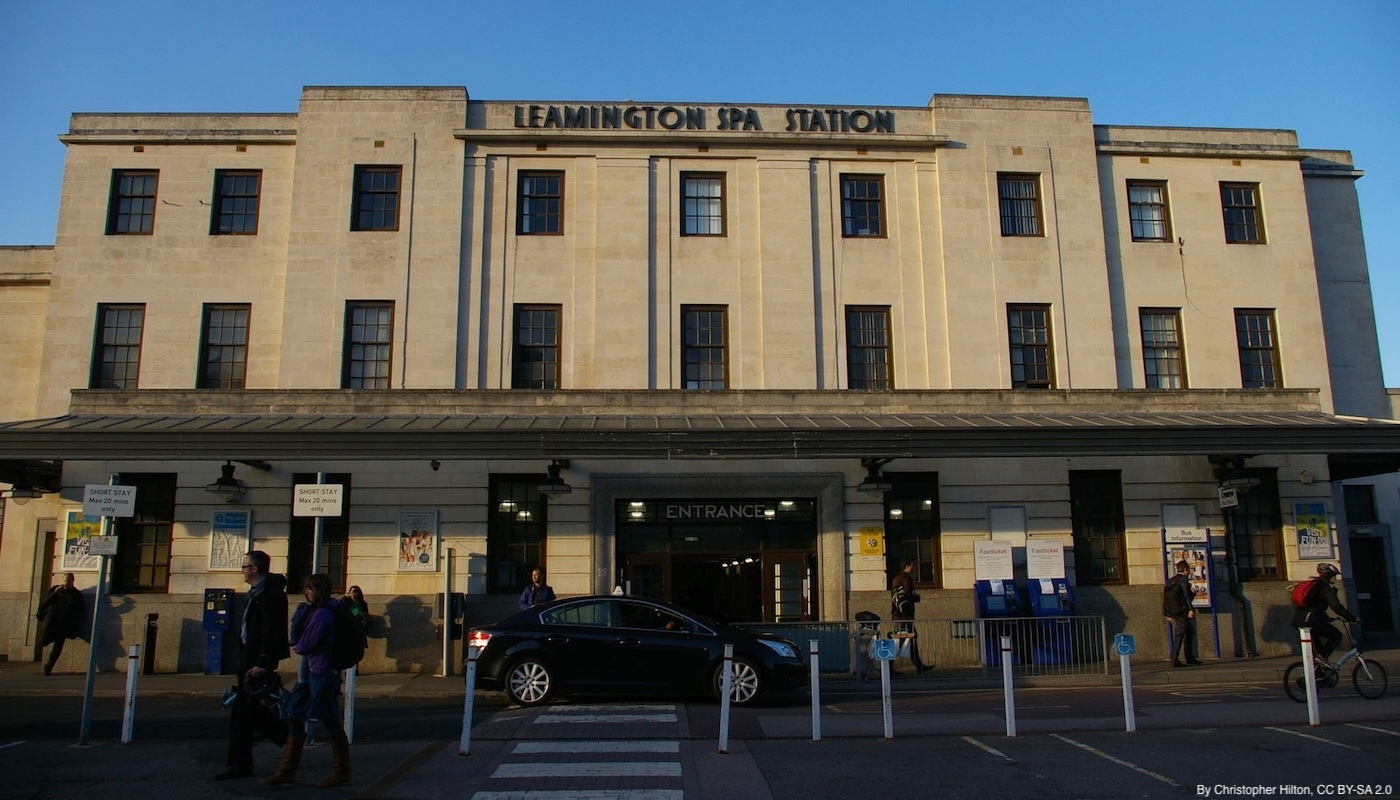7 Oct 2025 by Jonathan Raper
Unlike countries like Switzerland, in the UK we do not have an integrated transport system because bus, train, tram and ferry services are planned and operated independently from each other. Although there are places like London, Edinburgh and Liverpool where there is state ownership of key services, and though the devolved administrations run much transport in Scotland, Wales and N.Ireland, normally the trains do not wait for the buses and the buses do not wait for the trains.
This means that travellers have to make a judgment on whether two modes of transport will connect, especially if they are commuting to a job or making a critical journey to a medical appointment. Although the lack of joined up transport planning and operations is a challenge, we can now at least measure the performance of the services so that travellers can make more informed judgments, and local authorities can hold the providers to account if they don’t deliver on their scheduling commitments.
The foundation for this performance assessment is the tracking and recording of all actual bus and train journeys, now undertaken by TransportAPI across the country. The availability of this data now allows whole system delay exploration, and permits the analysis of connections between bus and train. To illustrate the possibilities for this data, we have extracted the bus performance data for the Stagecoach X17 service from Coventry and Warwick to Leamington Spa station (LMS) for two weeks in September 2025 and then matched it to the rail performance data for Chiltern, West Midlands and Cross-Country Trains at LMS on the same days.
Assessing whether a bus can successfully connect with a train involves picking a series of candidate bus and train service pairs separated by at least the ‘mode transfer time’. The photo above shows the distance from the bus stop to the station entrance with the platforms just beyond, meaning that a reasonable transfer time here is 3 minutes. Research on user behaviour has shown that travellers allocate time for contingencies when planning trips that is referred to as ‘buffer time’. We have therefore matched up bus and train service schedules separated by between 4 and 17 minutes, with this time made up of 3 minutes mode transfer and between 1 and 14 minutes of buffer time.

The table above shows two alternative train departures for each bus arrival for three morning outbound X17 bus journeys from Coventry and three morning inbound X17 journeys from Warwick, each when arriving at Leamington Spa station. Bus lateness was measured for the six X17 bus arrivals on each weekday from 3-18th September 2025 by making an ‘actual journey’ query to the TAPI Bus performance managed service to recover the scheduled and actual times for the arrival of the six bus services each weekday. Minimum lateness shows the earliest individual arrival times for each bus service, some of which are negative numbers as the arrival time was before the scheduled time (the bus was early). Mean lateness is the 50th percentile arrival time, while maximum lateness time is the single latest arrival time. By making an ‘actual journey’ query to the TAPI Rail performance managed service the same data was collected for the rail departures, which overall showed better on time performance than bus.
The table shows that minimum, mean and maximum bus lateness are very low for the off peak period (the first of the three bus arrivals), whereas during the peak period (the second and third arrivals) lateness rises dramatically with some individual delays at 36 minutes. By comparing the effective connection time with the minimum, mean and maximum lateness we can see whether or not a traveller is likely to catch their train in each of these scenarios (green and red cells). You can see that in the peak period that travellers would only catch the train with the minimum bus lateness, and therefore this would not be a viable strategy. If this position is common for major commuting flows from bus to rail, local authorities would need to make targeted interventions on the road network to bring down the mean lateness where they can, e.g. bus lanes and parking restrictions.

By visualising each potential journey case from on-time arrival to maximum lateness and adding in the average and maximum lateness of train services we can see if train delays provide any mitigation to bus delays. As you can see, at least at this station, train lateness is quite low, and it would only help travellers arriving at mean lateness bus arrivals during the peak for one of the train departures. Relying on the train being delayed is clearly not a strategy, and as the X17 offers a half-hour service getting the previous service to make sure of a connection could make the ‘buffer time’ up to 30 minutes, which is likely to inhibit anyone considering modal shift to public transport from their car.
TAPI Bus and TAPI Rail performance managed services offer this data at API across the country at scale and the Rail Performance Explorer and Bus Corridor Performance Explorer web applications allow you to browse the data. The availability of this data makes it possible to automate reporting through standard in-house analytics tools connecting to the TransportAPI RESTful APIs. This analysis was conducted using Power Query in Excel, as Excel can make the API request and output the data into a table.
The availability of this performance data now opens up the means to monitor bus and rail connections, and potentially to prioritise interventions to bring down bus lateness. The analysis can also be run in reverse to see how frequently rail delays might cause travellers to miss their connecting bus. We are already working with Warwickshire County Council to feed bus performance data into their service monitoring process, and we look forward to working with other local authorities who would like to make data-driven policy decisions to support further modal transfer.
